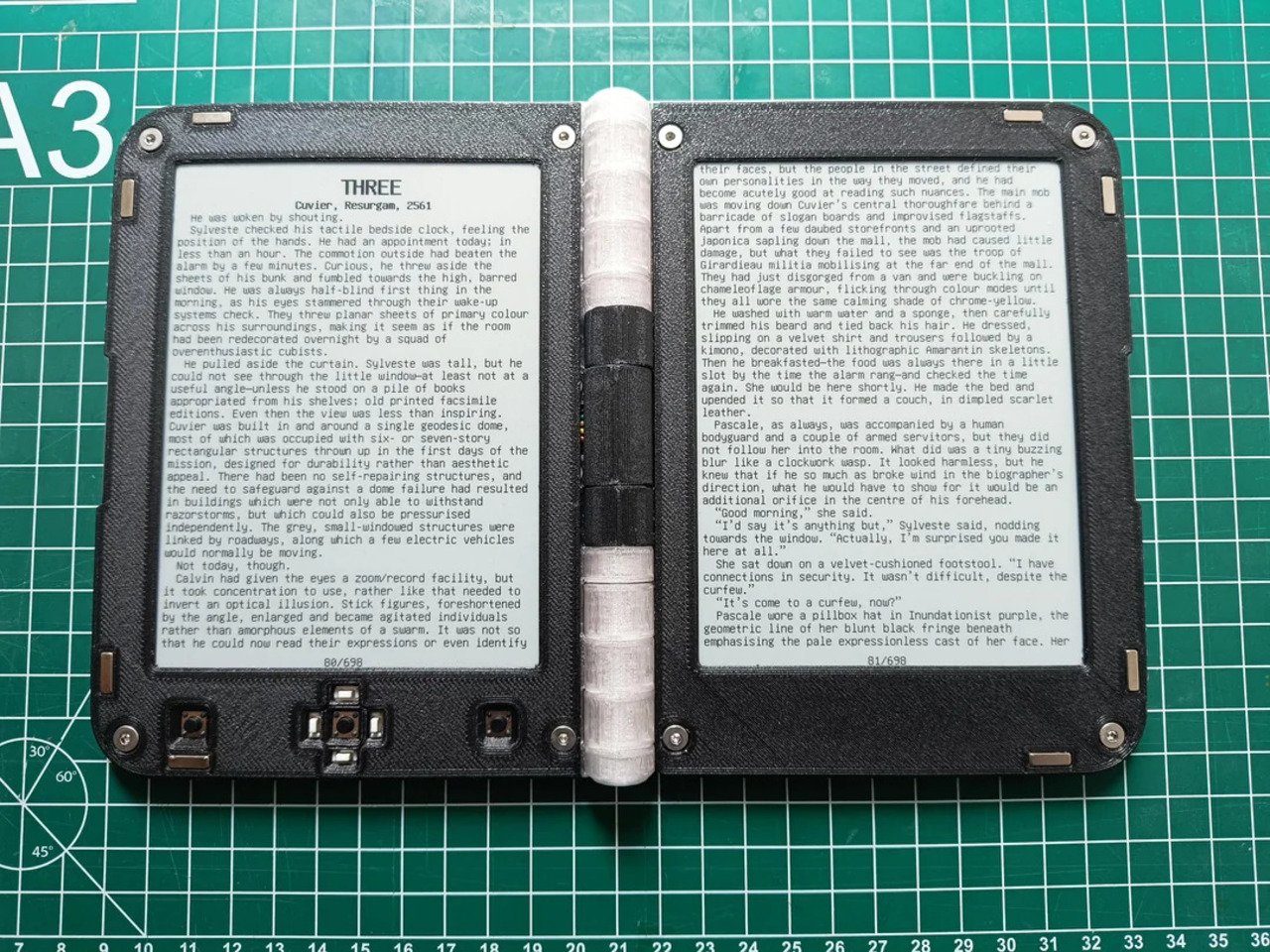There’s something irreplaceable about opening a real book and seeing two pages spread before you. Modern e-readers, for all their convenience, reduce this experience to a single screen that never quite captures the tactile ritual of turning pages and absorbing content across a natural spread.
Reddit user spacerower felt this limitation deeply enough to build something better. Their DIY dual-screen e-reader recreates the authentic book experience using modern E Ink technology, proving that sometimes the best innovations come from missing what we’ve lost rather than chasing what’s next.
Designer: spacerower
The hardware foundation is impressively thoughtful. Two 5.83-inch E Ink displays provide crisp, paper-like text rendering across both pages. An ESP32S3 microcontroller handles the complex task of managing dual screens while maintaining the power efficiency essential for any serious reading device.
The transparent 3D-printed case adds unexpected charm to the build. Rather than hiding the electronics, the clear housing celebrates the project’s DIY nature while serving practical purposes. The integrated hinge allows the device to fold shut like a real book, protecting both screens without requiring a separate case.
The user experience feels genuinely book-like in ways commercial e-readers never achieve. Open the device, and two pages appear simultaneously, just like opening a physical book. The ESP32S3 enters deep sleep mode after ten minutes of inactivity, dramatically extending battery life between reading sessions.
The transparent case transforms what could be utilitarian electronics into something almost sculptural. You can see the internal components working together, adding visual interest that most consumer devices deliberately hide. It’s functional transparency that celebrates rather than conceals the engineering.
Dual 1300mAh batteries power extended reading sessions, while a microSD card provides local storage for entire libraries. USB-C handles both charging and programming, keeping the modern conveniences while preserving the analog reading experience. The device folds down to just 16mm when closed, remarkably slim for a dual-screen setup.
Both hardware and software remain works in progress, which adds to rather than detracts from the project’s appeal. This isn’t a finished product but an ongoing exploration of what e-readers could become when freed from commercial constraints and single-screen limitations.
Managing dual E Ink displays presents unique programming challenges. Synchronizing page turns, refresh rates, and power management across two screens requires careful coordination. The ESP32S3’s capabilities make this possible while maintaining the efficiency essential for portable reading devices.
This project represents something bigger than just another DIY gadget. It’s a reminder that innovation often comes from recognizing what we’ve lost rather than blindly pursuing what’s new. Commercial e-readers optimize for cost and manufacturing efficiency, not reading experience. Sometimes the most meaningful technology projects are those that ask why we settled for compromises in the first place.
The post DIY Dual-Screen E-Reader Brings the Book Experience to E Ink first appeared on Yanko Design.

